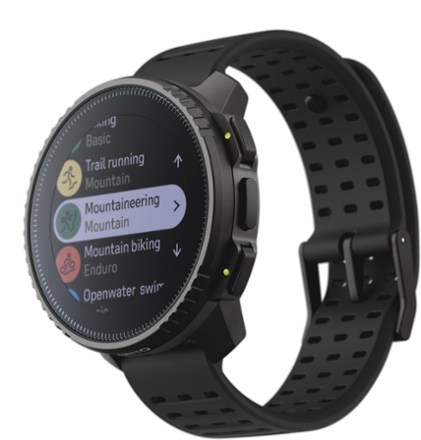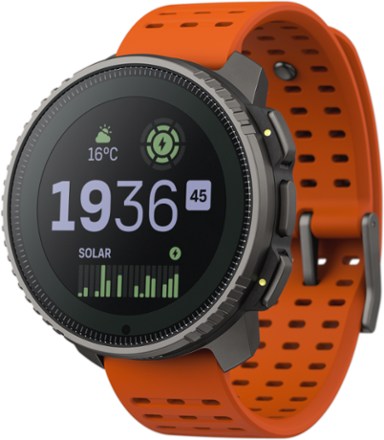Suunto’s rugged outdoor wearable offers long battery life (with optional solar charging) and excellent offline map capabilities
When you purchase through links on our site, we may earn an affiliate commission.Here’s how it works.
(Image credit: Matt Kollat/T3)
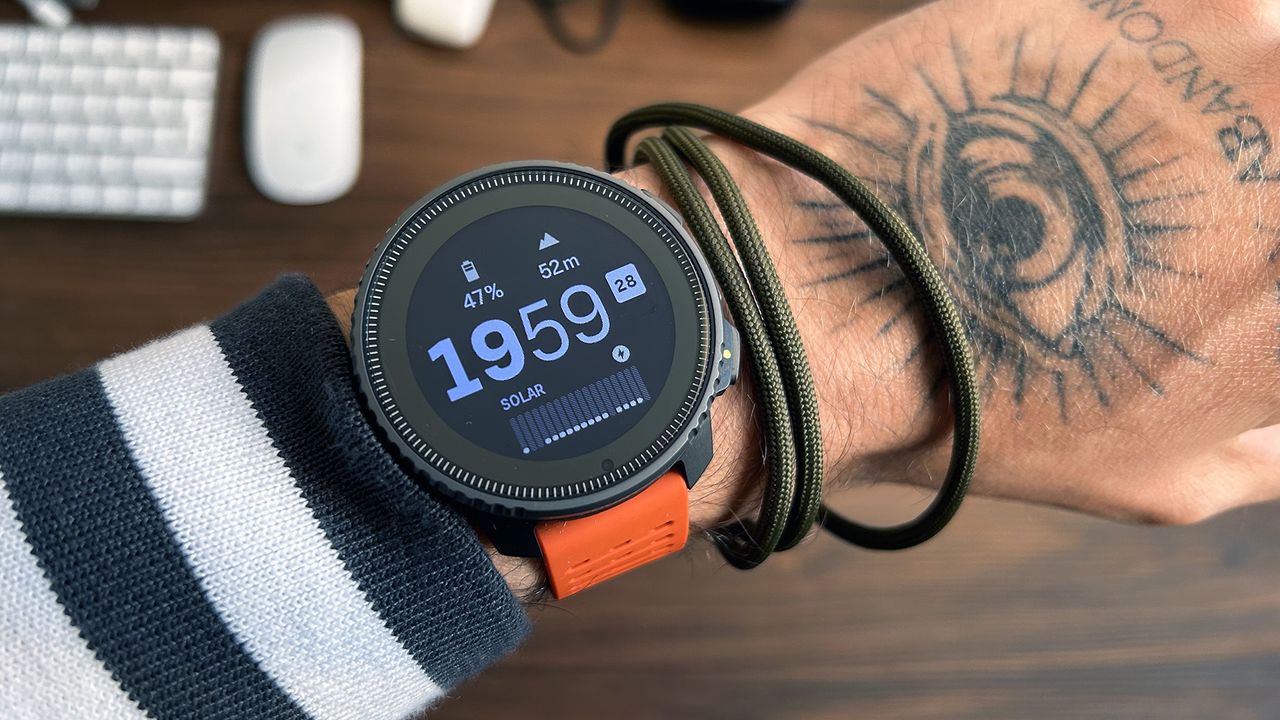
(Image credit: Matt Kollat/T3)
T3 Verdict
Reasons to buy+Long battery life (+ solar charging)+Dual-band multi-GNSS+Fully carbon-compensated manufacturing process+Excellent mapping performanceReasons to avoid-You can get other outdoor watches with better smartwatch capabilities for the same price (or less)-Touch interactions are sluggish-Backlight cannot be turned off (not ideal for sleeping)-The watch seems to beep randomly throughout the day, even when it’s in ‘Do Not Disturb’ mode (e.g. when you hit your calorie goal for the day)
Reasons to buy+Long battery life (+ solar charging)+Dual-band multi-GNSS+Fully carbon-compensated manufacturing process+Excellent mapping performance
Long battery life (+ solar charging)
Dual-band multi-GNSS
Fully carbon-compensated manufacturing process
Excellent mapping performance
Reasons to avoid-You can get other outdoor watches with better smartwatch capabilities for the same price (or less)-Touch interactions are sluggish-Backlight cannot be turned off (not ideal for sleeping)-The watch seems to beep randomly throughout the day, even when it’s in ‘Do Not Disturb’ mode (e.g. when you hit your calorie goal for the day)
You can get other outdoor watches with better smartwatch capabilities for the same price (or less)
Touch interactions are sluggish
Backlight cannot be turned off (not ideal for sleeping)
The watch seems to beep randomly throughout the day, even when it’s in ‘Do Not Disturb’ mode (e.g. when you hit your calorie goal for the day)
Why you can trust T3Our expert reviewers spend hours testing and comparing products and services so you can choose the best for you.Find out more about how we test.
Why you can trust T3Our expert reviewers spend hours testing and comparing products and services so you can choose the best for you.Find out more about how we test.
Jump to category:Price and availabilityDesign and build qualityFeatures and user interfaceMaps and navigationBattery lifeVerdictAlso consider
Jump to category:Price and availabilityDesign and build qualityFeatures and user interfaceMaps and navigationBattery lifeVerdictAlso consider
Suunto Vertical deals
$629View$629ViewNo price informationCheck Amazon
$629View
$629View


$629View
$629
$629
$629View
$629View

$629View
$629
$629
No price informationCheck Amazon
No price informationCheck Amazon

No price informationCheck Amazon
No price information
No price information
Show More Deals
Show More Deals
We check over 250 million products every day for the best prices
Suunto Vertical review TL;DR: The Finnish manufacturer’s latest wearable doubles down on outdoor navigation with dual-band GNSS support for more accurate positioning and long battery life for uninterrupted outdoor adventuring. The touchscreen could operate smoother, and some of the smart functionality isn’t quite there, but it’s undoubtedly the most interesting Suunto launch in the last few years.
I always placed Suunto firmly in theoutdoor watchcategory. I remember being in awe of the Suunto 9 Baro a few years ago, beingthewearable to buy if you wanted a long battery life. The market has changed significantly since then, with brands likeGarminand Coros offering rugged wearables with excellent battery life (see also:Garmin Enduro 2 reviewandCoros Apex 2 Pro review).
I also remember being slightly confused about Suunto’s iterative approach, not knowing if a new release was supposed to be a version of their top wearable or a completely new watch (see also:Suunto 9 Peak reviewandSuunto 9 Peak Pro review).
(First reviewed May 2023)
Suunto Vertical review
Suunto Vertical review: price and availability
The Suunto Vertical was announced on 9 May 2023 and is available to buy now directly fromSuunto UK,Suunto USandSuunto AUfor £545/ $629/ AU$ 999 (Stainless steel) and £725/$839/AU$1,299 (Titanium Solar). This is the most expensive watch from Suunto to date, with the Suunto 9 Peak Pro selling for $549-$699, the Suunto 9 Peak for $399-$499 and the Suunto 5 Peak for $199.
For comparison, the RRP of fellow outdoor watchAmazfit T-Rex 2is only $230, while thePolar Grit X’s RRP was around $430 when it launched. On the other hand, the also solar-capable Garmin Enduro 2 sells for $1,100, and theGarmin Fenix 7X Solarfor $899. I tested the Suunto Vertical Titanium Solar.
Suunto Vertical review: design and build quality
(Image credit: Matt Kollat/T3)
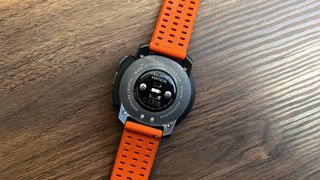
(Image credit: Matt Kollat/T3)
The Suunto Vertical comes in two versions: the slightly heavier Stainless Steel edition and the lighter Titanium Solar versions (86 grams and 74 grams, case only). Both share the exact dimensions: the case has a 49 mm diameter and is 13.6 mm deep. The Vertical has a 1.4" touchscreen ‘matrix’ panel with a resolution of 280 x 280 pixels hidden under a scratch-resistant Sapphire crystal lens, Suunto’s largest display to date.
The watch is water-rated to 100 metres (10 ATMs) and uses a 22 mm quick-release strap. There are three physical buttons on the left side of the case; the one at the top takes you to the workout section, and the one at the bottom to the menu with all the smart functions (and map). The one in the middle is for entering menus and swiping through the tiles (more on this below).
I tested the Titanium Solar version of the watch, and it felt as sturdy as I would expect from a rugged outdoor watch. It has fewer knobbly bits than Garmin’s outdoor watches, partially to align with the design of other Suunto watches but also to make it look different from Garmins (I assume so).
The solar ring runs around the edge of the display. However, it doesn’t cover too much useful screen real estate. Solar performance is yet to be adequately tested – it’s been rather cloudy/rainy in the UK when I tried the watch – although officially, the Suunto Vertical can last up to a year in ‘Time Mode’. Not sure who would buy an outdoor watch for this much and use it only for telling the time, though.
Suunto Vertical review: features and user interface
(Image credit: Matt Kollat/T3)
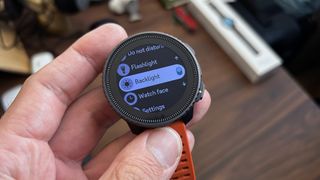
(Image credit: Matt Kollat/T3)
Suunto has their own operating system, and it isn’t terrible. I’d say it’s a mix of Garmin’s OS andGoogle’s WearOS: you get a scrolling menu and a tile system for quick views of your stats, such as heart rate, sleep log, fitness level, elevation, etc. It’s intuitive enough, making it hard to get lost in the bottomless pit of menu options.
The main feature is the offline map functionality, which I’ll discuss below. However, the Suunto Vertical isn’t just a one-trick pony and offers a lot more bang for your buck. It tracks heart rate, monitors sleep and evaluates training. It also estimates VO2 max and ‘fitness age’ and provides smart notifications and weather updates.
The watch hasn’t got memory for offline music storage but lets you control the music on your phone from your wrist. You can also set alarms and use the watch as a timer. What you don’t get are ECG and NFC for payments. This isn’t a casual smartwatch, after all; it’s more for outdoor adventurers who might not need these features anyway.
(Image credit: Matt Kollat/T3)
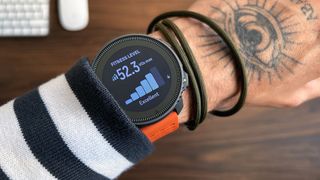
(Image credit: Matt Kollat/T3)
That said, other outdoor watches have these features (and more), most notably theHuawei Watch Ultimateand theApple Watch Ultra, selling for more or less the same amount of money as the Suunto Vertical. The Suunto Vertical has the best battery life of the lot, but it also has the slowest CPU and the least impressive display of the lot.
One thing I must point out is that touch interactions on the watch are quite laggy. It reminded me of theSuunto 7, a pretty WearOS watch from a few years back, which I struggled to use due to the slowness of the touchscreen. The Suunto Vertical is nowhere near as bad, and you can also operate the watch using the physical buttons, but still – it would have been better if the watch responded faster to touch.
Speaking of physical buttons: I find it strange that the watch hasn’t got a home button. Once you start scrolling through the tiles, the only way to get back to the watch face is to go through all the tiles or long-press the middle button, which takes you to the menu and press back on the top of the screen. Bit fiddly if you ask me.
Suunto Vertical review: maps and navigation
(Image credit: Matt Kollat/T3)
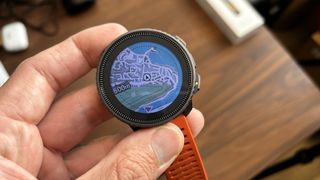
(Image credit: Matt Kollat/T3)
Mapping is something the Suunto Vertical excels in. In fact, the Vertical is the first Suunto watch with full offline map functionality. Not just that, but you can sync the watch with the Suunto app’s heatmaps, 3D maps and road surface-type layers to create bespoke maps to your liking.
When setting up the watch, the Suunto Vertical offered me to download local maps, which is a nice touch. There is a saying in design circles: the best interaction is no interaction. The less we expect users to do, the better, as long as their needs are met.Appledoes this beautifully, and Suunto’s office map recommendations are another good example of this approach.
I took the Suunto Vertical to Cheddar Gorge on a gloomy day with lots of clouds and fog to see how well the map function performs. I expected the map feature to be similarly sluggish as the main menu, but alas, I was pleasantly surprised with its performance. The map loads and moves around quickly, and thanks to the dual-band multi-GNSS system, it locks on the satellite signal quickly.
(Image credit: Matt Kollat/T3)

(Image credit: Matt Kollat/T3)
As a matter of fact, the Vertical found the signal quicker out in the wilderness than in more densely populated areas. I live on the coast in a moderate-sized town, so not in New York, but when I went for a run with the Vertical, I had to wait longer for the watch to find the signal than other dual-band watches I tested recently.
Maps are easy to control on the watch, and I found the button layout user-friendly, too. You can pre-load maps using the Suunto app or search for POIs in the area. I found the Expedition Mode on theHuaweiWatch Ultimate more capable, although that watch has a larger display and more robust waymarking options.
More info on Suunto Maps can be foundhere(links to Suunto).
Suunto Vertical review: battery life
(Image credit: Matt Kollat/T3)

(Image credit: Matt Kollat/T3)
For comparison, the Garmin Enduro 2 can last for up to 68 hours (81 hours with solar) in ‘All Satellite Systems and Multi-band’ mode, which I believe is the closest to Suunto’s Performance mode. The also dual-band Coros Apex 2 Pro can do 26 hours. The Suunto Vertical has the longest smartwatch battery life of the lot, with up to 60 days (and one year with solar) in Time mode.
Suunto Vertical review: verdict
(Image credit: Matt Kollat/T3)
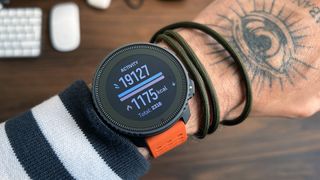
(Image credit: Matt Kollat/T3)
The Suunto Vertical is one of the most exciting launches from the Finnish manufacturer in the last few years. The mapping features are excellent, as are the battery life and the general build quality of the watch. The added solar charging option is also a step in the right direction for Suunto.
I would’ve appreciated a faster CPU and smoother touch interactions. Plus, these days, having a matrix screen is nothing to write home about. A non-AMOLED display certainly helps battery life, though, but based on my experience, it certainly doesn’t improve visibility in bright lighting conditions.
Overall, the Suunto Vertical isn’t the worst option for outdoor navigation, but there are plenty of alternatives available, which might make it harder to justify the asking price of the watch. I recommend waiting a bit to see if the cost of the watch drops slightly, which might make it more appealing in the ever-so-saturated rugged outdoor watch market.
Suunto Vertical review: also consider
I mentioned a bunch of Suunto Vertical alternatives in the review above. For even more options, check out T3’sbest outdoor watch,best triathlon watchandbest running watchguides.
Of the watches I tested recently, I would recommend the Garmin Forerunner 965 the most. It’s rugged enough (i.e. titanium bezel) and uses the same sensors and features as its predecessor, but it’s lighter and thinner than that. Despite the AMOLED display, the watch has a very good battery life (although not as good as the Vertical). Read my fullGarmin Forerunner 965 reviewfor more detail.
Suunto Vertical: Price Comparison
$629View$629View$839View$839ViewNo price informationCheck Amazon
$629View
$629View


$629View
$629
$629
$629View
$629View

$629View
$629
$629
$839View
$839View
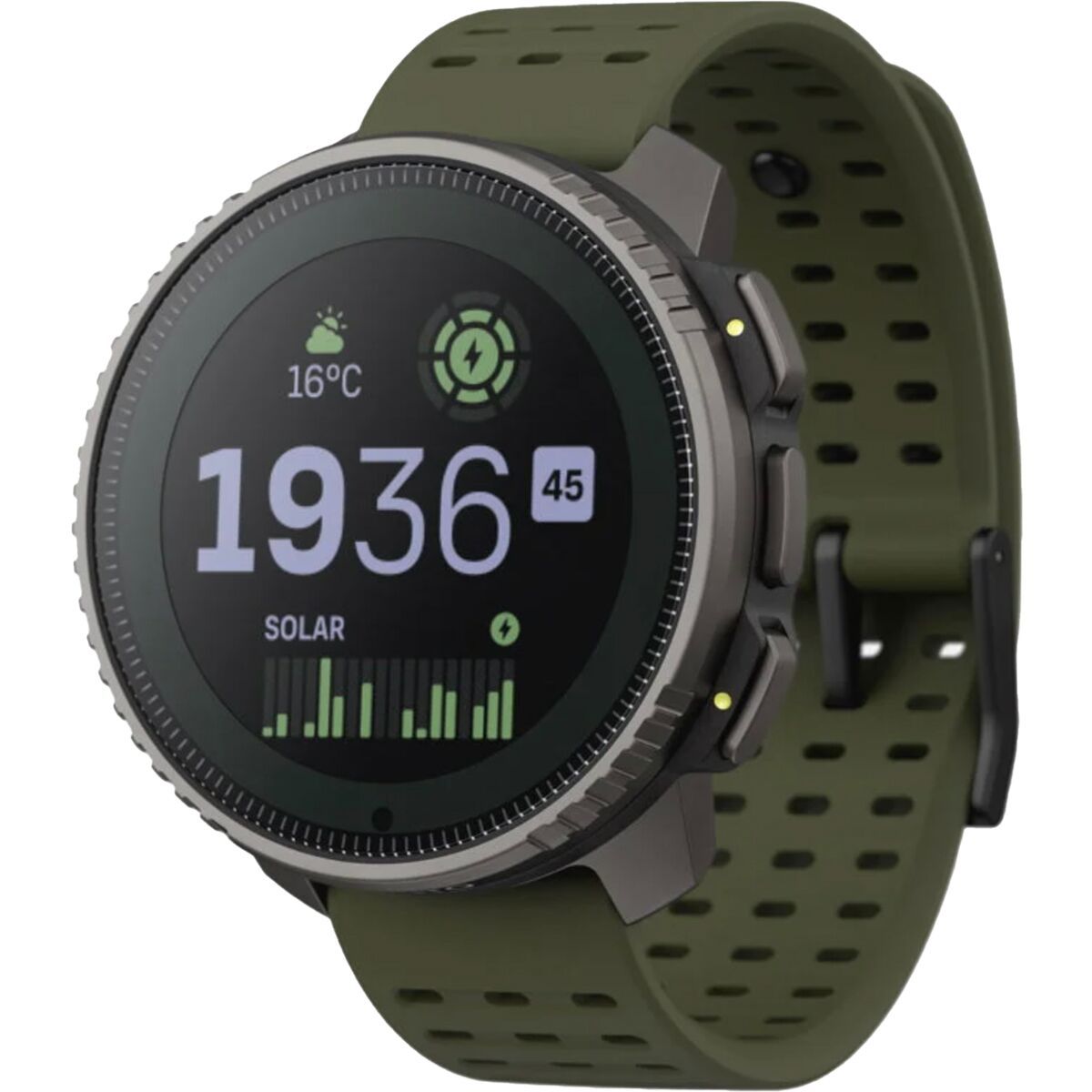

$839View
$839
$839
$839View
$839View

$839View
$839
$839
No price informationCheck Amazon
No price informationCheck Amazon

No price informationCheck Amazon
No price information
No price information
We check over 250 million products every day for the best prices
TOPICSGarmin
TOPICS
Sign up to the T3 newsletter for smarter living straight to your inbox
Get all the latest news, reviews, deals and buying guides on gorgeous tech, home and active products from the T3 experts

OMEGA puts the moon on your wrist with its new Speedmaster Moonphase MeteoriteOMEGA adds two new Moonphase Meteorite watches to its Speedmaster line-up
OMEGA adds two new Moonphase Meteorite watches to its Speedmaster line-up

There’s an amazing money-off deal on Samsung Galaxy S25 alreadyGet £50 / $50 off a new Samsung Galaxy S25 when you register your interest
Get £50 / $50 off a new Samsung Galaxy S25 when you register your interest

R.A.D unveils the next generation of its iconic workout shoe with a redesigned upper and more cushioningThe first look at the R.A.D One V2 is officially here with a fresh new look and various tweaks
The first look at the R.A.D One V2 is officially here with a fresh new look and various tweaks
